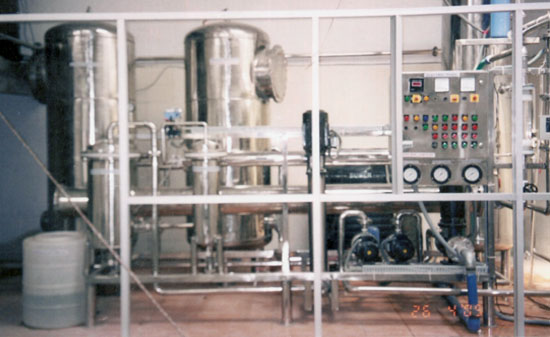Pre-treatment steps:
- Clarification followed by Sand Filtration for Turbidity removal
- Water disinfection with chlorine
- Hardness reduction by Softening
- Addition of scale inhibitor
- Reduction of free chlorine using sodium bisulfite/ Activated carbon filters
- Final removal of suspended particles using cartridge filters

